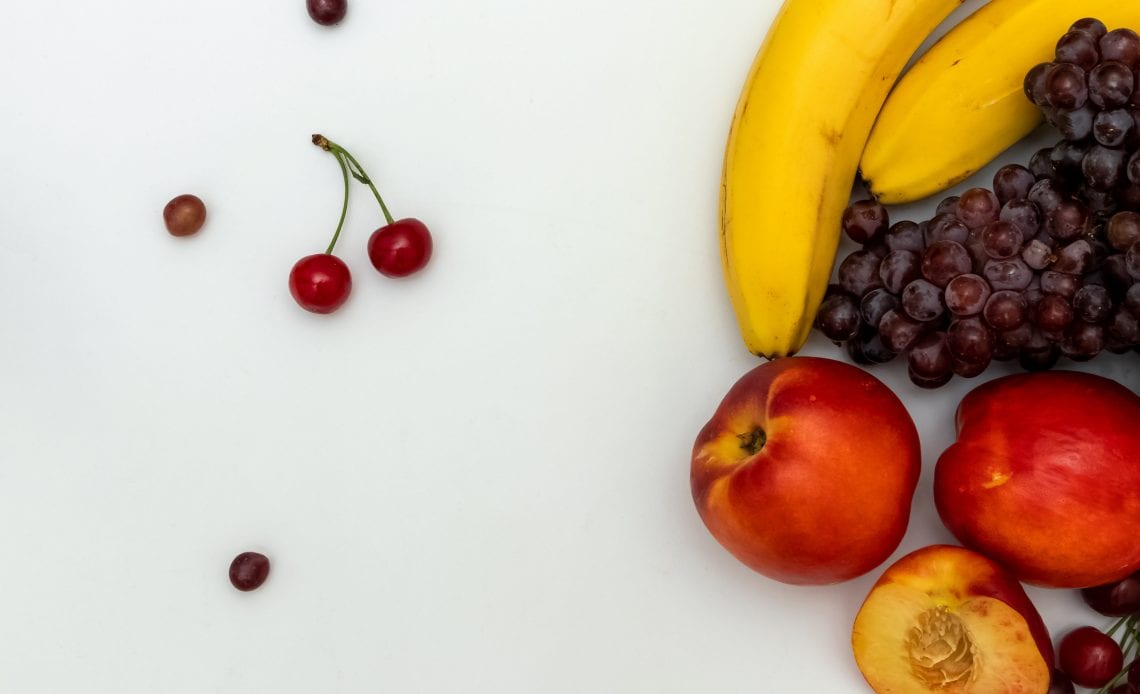
Agriculture and humankind have been inseparable for thousands of years. However, humans didn’t take to agriculture right from the beginning of their existence. Initially, humans gathered plants and hunted animals to procure food. The transition from these methods to agriculture took place between 14,500 and 12,000 Before Present (BP) in Southwest Asia. As the domestication of plants and animals grew, agriculture developed. It was around 12,000-11,000 BP that domesticated plants came into being.
Domesticating plants included the use of genetic modification and selective breeding. These techniques changed the plants’ characteristics. There’s a lot of speculation about when fruit culture began. Fruit culture involved using a specific piece of ground for a long time. Most fruits that were initially cultivated must’ve been indigenous species. Here are some fruits that were domesticated and changed over time:
Banana

Banana is a popular fruit that belongs to the Musaceae family. It’s an excellent source of antioxidants, fiber, pyridoxine (vitamin B6), and minerals like potassium. The cultivation of bananas began around 7,000-10,000 years ago in what is now called Papua New Guinea. Native to the Pacific region and Southeast Asia, wild bananas were tough and their interior contained hard, large seeds.
Banana plantations came up in the 15th and 16th centuries in Western Africa, the Atlantic Islands, and Brazil when Portuguese colonists established them. Bananas started becoming common in the markets of the US only in the 19th century. Modern bananas originate from the wild Musa acuminata and Musa balbisiana varieties. The bananas we find today have smaller seeds, better shape and taste, and are more nutritious than wild bananas. Some forms of modern bananas are seedless. There is little genetic diversity in domesticated bananas, which makes them quite vulnerable to diseases and pests.
Bananas can be eaten raw, used in desserts, or as a substitute for sugar. You can even add them to cereals, smoothies, and yogurt. Cavendish bananas are the most commonly eaten variety. However, due to a strain of a disease, scientists are worried that Cavendish bananas may eventually become extinct. As per estimates of the Food and Agriculture Organization (FAO), the annual global output of bananas between 2017 and 2019 was approximately 116 million tonnes.
Peach

The origin of peaches, which are included in the Rosaceae family, can be traced back to China even before 3300-2500 Before Common Era (BCE). Different forms of peaches were grown across China. The Chinese probably then introduced the fruit into Persia in the 1st or 2nd century BCE. Wild peaches resembled cherries, weren’t very fleshy, and had a salty and earthy taste, similar to a lentil.
The Spanish brought the peach to America. Large-scale cultivation of peach began in the US during the 19th century, and today, the fruit is extensively cultivated in California. As a result of approximately 6,000 years of selective breeding, modern peaches are quite opposite to wild peaches. They’re sweeter, larger, juicier, and have a smaller stone.
Rich in vitamins, antioxidants, and minerals, peaches make for a wonderful snack. You can eat peaches grilled, raw, baked, or even sautéed. Canned peaches are a staple in many regions. Across the globe, more than 25 million tonnes of peach and nectarine (a peach with smooth skin) are produced annually. China produces the highest amount of peaches and nectarines in the world annually, followed by Spain.
Eggplant

Yes, eggplants fall under the category of fruits (berries, to be precise) because they contain seeds! Although it’s a fruit, eggplant is typically used as a vegetable. You can consume it sautéed, baked, grilled, or roasted.
Eggplant, which belongs to the Solanaceae family, is low on calories. This fruit provides fiber, antioxidants, and other nutrients like manganese and magnesium. Eggplants are said to have originated in India. Due to its bitter flavor, it’s believed that eggplant was used for medicinal purposes to some extent. Primitive eggplants were found in different colors, ranging from blue to yellow, and shapes, from round to oblong. Wild eggplants also had another unique feature—spines on top.
People living in the Indo-Burma region domesticated wild eggplants. Thanks to selective breeding, modern eggplants have a stem connecting to their flowers in place of the spines. Modern eggplants also differ from wild eggplants as they are purple, oblong, longer, and have few to no prickles. In 2014, FAO stated that the annual global production of eggplant was 50 million tonnes.
Watermelon

Watermelons, a part of the Cucurbitaceae family, are enriched with vitamin C and vitamin A. They’ve undergone quite the transformation from when humans began their cultivation more than thousands of years ago. Watermelons are native to Africa, but there’s still no certainty about where in Africa they were first grown.
A 17th-century painting by Giovanni Stanchi brings to light that wild watermelons looked starkly different from today’s watermelons. Wild watermelons had many seeds and swirly shapes in their flesh, which is the placenta. The placenta of these watermelons didn’t have high amounts of lycopene in their flesh, due to which their interior wasn’t bright red, and they weren’t as sweet.
Compared to wild watermelons, modern watermelons are sweeter and smaller because of selective breeding. They have a white lining and bright red flesh. Some varieties of modern watermelons are seedless as well. A watermelon can weigh anywhere from 1 kg to 20 kg. Watermelon is typically consumed raw or in the form of juice. Sometimes, even the rind is preserved and used as a pickle. As of 2015, 100 million tonnes of watermelons were grown annually across the world.
Tomato

Tomato, like eggplant, is another fruit commonly mistaken for a vegetable. This fruit is also a part of the nightshade (Solanaceae) family. Tomatoes are made up of 95% water and are a great source of vitamins like folate (vitamin B9), lycopene (a phytochemical), and minerals like potassium.
Cherry-sized tomatoes originated in South America, perhaps Ecuador and Peru, approximately 80,000 years ago. The Spanish brought the fruit to Europe in the 16th century. At the time, tomatoes were only grown as ornamental plants as the Europeans believed they were poisonous. Wild tomatoes looked like berries and were darker and smaller than today’s tomatoes. It’s believed that the tomatoes the Europeans grew and had access to were yellow as the Italians called the fruit “pomodoro” (golden apple).
Modern tomatoes are larger and juicier than their ancestors. Tomatoes only gained widespread popularity in the US during the early 20th century. People eat tomatoes raw, roasted, pickled, or include them in various dishes like pasta. Tomatoes are a great addition to salads as well! Tomato is processed for many products, like purée, ketchup, canned tomatoes, and sun-dried tomatoes. The Spanish even started La Tomatina Festival (The Tomato Festival) in 1945. At the Festival, participants engage in tomato fights for entertainment purposes. As of 2018, 188 million tonne tomatoes were produced worldwide annually.
Apple

Ever wondered what makes apples so special that the proverb “an apple a day keeps the doctor away” is so frequently quoted? Apples are high in dietary fiber, carbohydrates, vitamin A, and vitamin C. Apples can be consumed fresh, fried, or even as a pastry filling. This fruit, also a member of the Rosaceae family like peach, has come a long way from the time it was first cultivated.
Apples were first cultivated in Central Asia 4,000-10,000 years ago. These apples (crab apples) were small and tasted bitter. With the movement of nomads, these apples moved out of Central Asia and into Siberia, Caucasus, and Europe. This shift led to the crab apples getting crossed with local ones.
These crab apples were further domesticated, which resulted in the development of today’s apples. Modern apples are sweeter, larger, have a firm flesh texture, and last longer. Apple is a heavily cultivated tree fruit—the world produces more than 60 million metric tonnes of apples annually. China is the largest producer of apples. Over half the apple produce in America is used as fresh fruit, while one-fifth of it is used for apple butter, jelly, and juice. Europe consumes most of its apple produce for brandy, wine, and cider. One-fourth of the total world production of apples is used to make cider. This list is not exhaustive because many more fruits have changed over the years. With the world being in a constant state of flux and new methods of agricultural production developing, no hybrid variety stays the same. While there is a continuous debate about the safety of genetically-modified food, most of what we produce and consume falls under this category. The techniques employed by our ancestors to develop agriculture are the reason for this. As there are two sides to a coin, so is the case with the modern fruits that we eat. All in all, it is safe to conclude that the human race has come a long way in terms of the fruits that we grow and consume!

